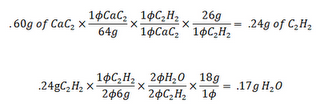In class today we got started on the Copper and Silver Nitrate Lab. We were to add 1.4-1.6 grams of silver nitrate crystals into a 50 mL beaker and record its mass. Then we were to fill the beaker with 3o mL of distilled water and stir it until the crystals dissolved. After the crystals dissolved, we were to coil a piece of copper wire around a pencil and then attach the coil to a wooden stick. The coil looked something like this...
Then we put the copper wire into the silver nitrate solution. Once the wire was in the solution, we put three drops of nitric acid into the beaker. We were to let the copper wire sit in the mixture for fifteen minutes and record our observations. The copper wire began to look grey and fuzzy. The liquid began to turn turquoise after about five minutes. The copper wire looked like this...
After fifteen minutes, we took the copper wire out of the mixture and held it over a 100 mL beaker. We held a steady stream of distilled water over it until all of the silver came off of the wire. Once the copper wire was clean, we rinsed it with acetone. Then we massed it and recorded the mass in our data tables. The copper wire was dull because it lost all of its shine. The rinsed copper wire looked like this...
Lastly, we decanted the water from the beaker into a waste flask so that most of the water was discarded. We rinsed the silver with distilled water and then poured the water out about five times. We have to let the solid dry overnight so we were not able to finish the lab today. So far, our beakers looked like this.....
And we will see what they look like tomorrow so we can finish the lab!
Hopefully we will gather enough silver for Ben T. to sell and Kaitlin S. and I can make a pinkie toe ring :)
The next scribe is Aaron G. Enjoy.
